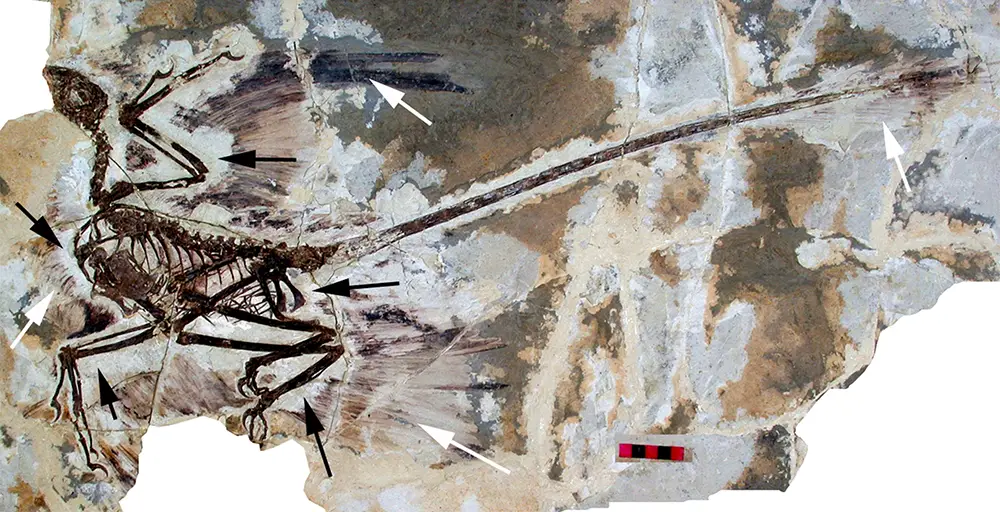Discovered in China, “Four-Winged” fossil helps explain how larger dinosaurs took to the air.
A new raptorial dinosaur fossil with remarkably long feathers has unveiled exciting insights into dinosaur flight, especially that of larger winged dinosaurs. An article published in Nature Communications on July 15, 2014 asserts that the fossil- discovered by an international team led by Natural History Museum of Los Angeles County (NHN) palaeontologist Dr. Luis Chiappe- has a long feathered tail that Chiappe and co-authors believe was vital for decreasing descent speed and assuring safe landings.
The 125-million-year-old dinosaur, which has been named Changyuraptor yangi, was discovered in the Liaoning Province of northeastern China. This particular location has seen a substantial increase of discoveries in feathered dinosaurs over the last decade. The newly discovered, remarkably preserved dinosaur boasts a full set of feathers cloaking the entirety of its body, including extra-long tail feathers. “At a foot in length, the amazing tail feathers of Changyuraptor are by far the longest of any feathered dinosaur”, said Chiappe.
Analyses of the bone microstructure by University of Cape Town (South Africa) scientist, Dr, Anusuya Chinsamy, shows that the raptor was a fully grown adult, and at a whopping nine pounds, the four-foot-long Changyuraptor is the largest of all the four-winged dinosaurs. These microraptorine dinosaurs are dubbed “four-winged” because of their long feathers attached to both legs and arms and have led researchers to conclude that the four-winged dinosaurs were capable of flight. “Numerous features that we have long associated with birds in fact evolved in dinosaurs long before the first birds arrived on the scene,” said co-author Dr. Alan Turner from Stony Brook University in New York. “This includes things such as hollow bones, nesting behaviour, feathers… and possibly flight.”
However, how well these creatures used the sky as a thoroughfare has remained controversial. The new discovery explains the role the tail feathers undertook during flight control. For larger flyers, safe landings are of particular importance. “It makes sense that the largest microraptorines had especially large tail feathers- they would have needed the additional control”, added Dr. Michael Habib, a researcher from the University of Southern California and co-author of the paper.

The discovery of Changyuraptor consolidates the idea that flight preceded the origin of birds, being inherited by the latter from their dinosaurian forerunners. “The new fossil documents that dinosaur flight was not limited to very small animals but to dinosaurs of a more substantial size,” said Chiappe. “Clearly far more evidence is needed to understand the nuances of dinosaur flight, but Changyuraptor is a major leap in the right direction.”
Contributing Source: Natural History Museum Los Angeles County
Header Image Source: Wikimedia




